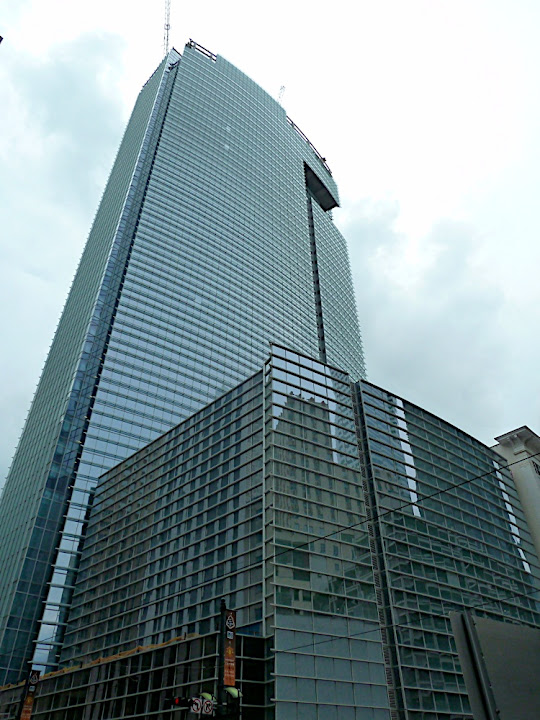houston
Houston is a maze of multi-lane superhighways crisscrossing a forest of office towers with pockets of isolated residential neighborhoods. This is a city built for cars with multitude of garages and parking lots to accommodate all the people driving to town: one driver per vehicle. Buildings are designed to look good from the highway as if that was their primary objective.
It all started innocently in the 20s with Niels Esperson Building followed by Gulf Building built in my favorite art deco style. And it went downhill (or should I say uphill) from there. Gradually low buildings were torn down to make room for ever growing skyscrapers, streets were replaced by highways to allow for ever increasing traffic. There are over 600 high-rises in Houston with 6 miles of tunnels underneath so one is not subjected to the outside heat. But instead of a subway there is one mall food-court after another. Maybe train didn’t fit in after all stores and restaurants descended underground trying to escape ever present cars.
We take a brief tour underground among the crowd of office workers on their lunch hour: men in suits, women in pant-suits and high heels. Everybody with a determined look of a person on the mission: get lunch, finish work, hop in the car and leave the concrete prison behind. We ascend on the surface that is full of towering buildings in all possible styles from Italianate to all-glass. There is even a fast street train. Interesting marriage of utility, esthetics and space saving takes its tracks through a fountain that takes one block along the Main Street. For such a grand place Houston Downtown it’s surprisingly devoid of people and cars this time of the day. It all changes in a few hours when we try to leave the city: suddenly cars are clogging six lane highways, zoom on three-level fly-over ramps going in all possible directions, honk and cut across lanes rarely bothering to signal.
We stay with Michelle, who, after the trip on Spree, invited us to stay at her house. She is the most enthusiastic guide and we learn that among office buildings and hotels - as hard as it is to believe - there are few residential condos. Only an anti-social masochist would willingly move here: there are no groceries large or small, public transportation is only available downtown (bye-bye suburban friends), tunnels - and shops and eateries they contain - are open mostly during office hours.
Talking to Michelle we get a glimpse of how locals deal with the city too large to live in. The mental picture of spatial relationships shifts. While close for me is no more that a mile or two (because this is how far a person can comfortably walk), close in Houston is a 30 minutes drive. On a highway. So it can be as far as 30 miles if the traffic is light. And it is rarely light. People try to cope by leaving work earlier and earlier in vain attempt to beat it. Or they, like Michelle, throw in the towel and simply work from home. Nobody has dinner downtown unless there is a concert or a sporting event to make a drive worthwhile.
Residents are terribly proud of their city and claim it is one of the best and most comfortable to live in. Except for distances. And the traffic. Which they insist is just a minor nuisance. I admire their power of rationalization.

